The Acropolis Museum is the museum dedicated to the Acropolis and its archaeological artefacts. Located a short distance away from the Acropolis, the Museum serves as an exhibition space for the great many artefacts discovered on the Acropolis, and provides visitors with the valuable opportunity to view them up close.
For most visitors, however, the Museum’s draw lies in the display of the sculptures of the Parthenon in its own dedicated gallery. With most of the Parthenon’s marble sculptures having been removed and stored in the Museum for preservation, a visit to the Museum is the only way to complete your visit to the Parthenon in Athens.
The Parthenon Gallery
The crown jewel of the Museum is the Parthenon Gallery, occupying the top floor of the Museum structure. Like its name suggests, the Gallery is dedicated to the sculptures of the Parthenon. This is where you’ll find the original marble sculptures on display, as they were removed from the Parthenon to aid their preservation.
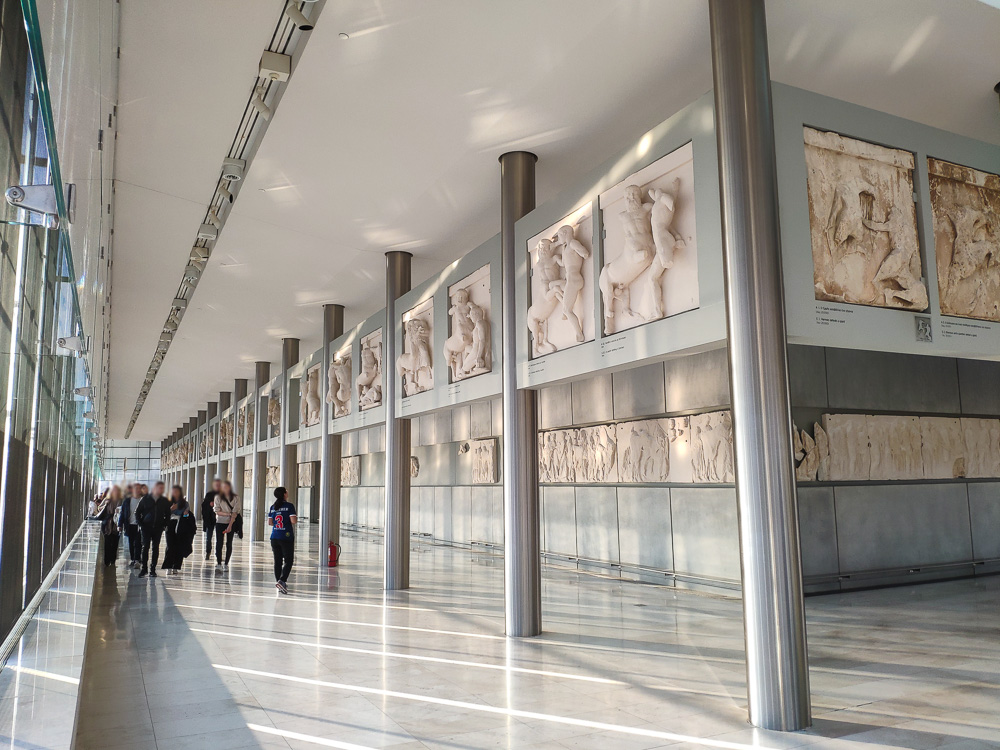
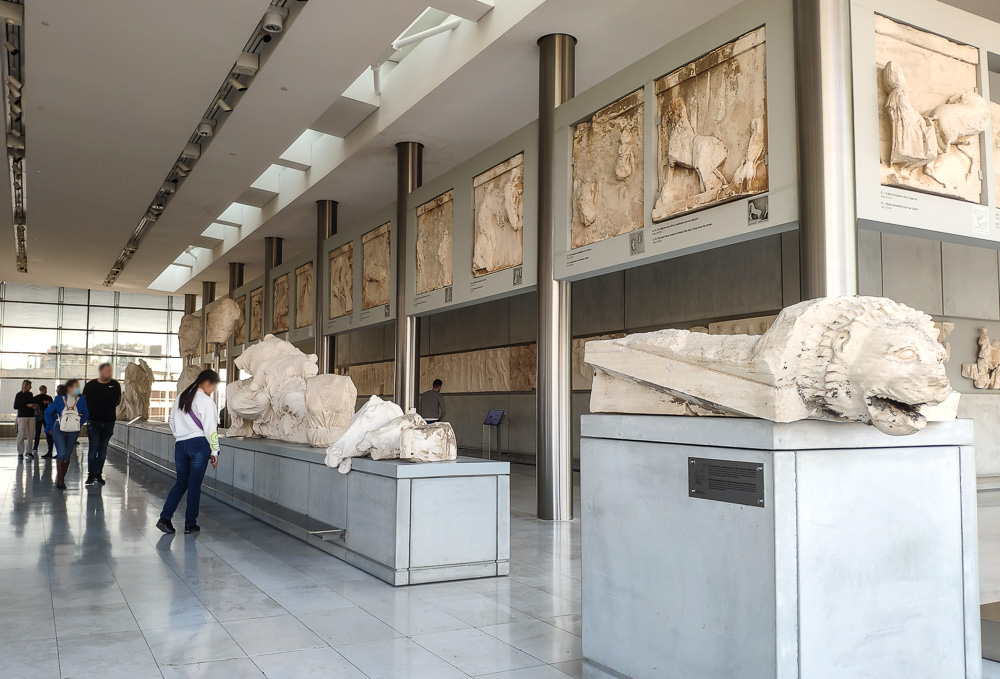
The design of the Gallery intentionally mirrors that of the Parthenon, with the sculptures from the friezes, metopes, and pediments of the Parthenon all arranged in the same orientation as they were on the actual structure. As the Museum’s website writes:
The outer walls of the core incorporate the relief-carved blocks of the temple’s Ionic frieze, mounted in the same position as they held on the monument, but at a lower height for better viewing. The metopes are presented in pairs between the steel columns of the hall, which have the same number as the Parthenon’s columns, while the colossal figures once displayed in the building’s two pediments have been mounted on low, pedestals at the east and west side of the gallery, where they are visible from all directions.
The Parthenon Gallery, the website of the Acropolis Museum.
This alignment with the Parthenon is also accomplished quite literally, as the Gallery’s physical structure is askew from the Museum building in order to align it with the Parthenon. The rectangular interior space is then walled up by glass walls that allow a direct line of sight between the Museum and the Parthenon on the Acropolis.
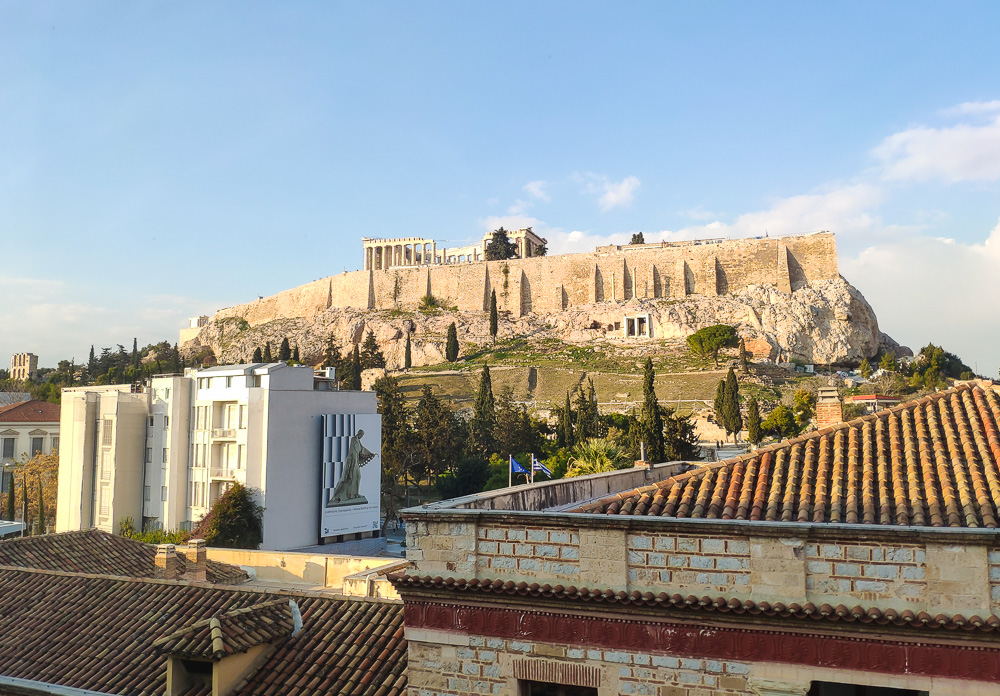
The presentation of the sculptures also makes reference to the fact that a significant portion of the Parthenon’s sculptures were removed by the 7th Earl of Elgin and brought to London, where they are now displayed in the Duveen Gallery of the British Museum. The stolen pieces are represented in Athens by white plaster copies mounted alongside the counterparts of the originals – the contrast is quite stark and hard to miss.
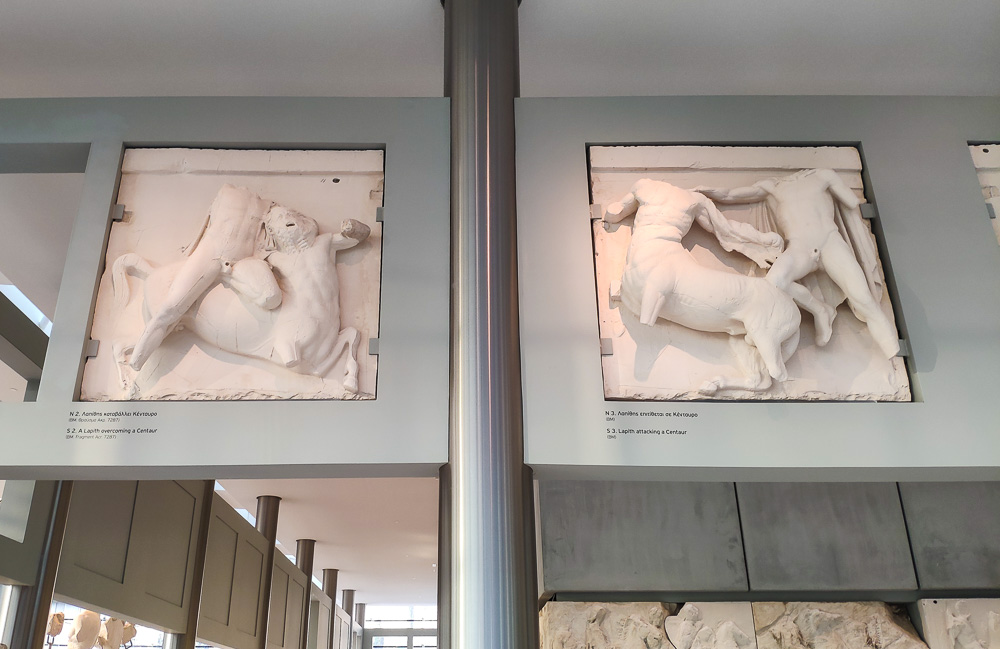
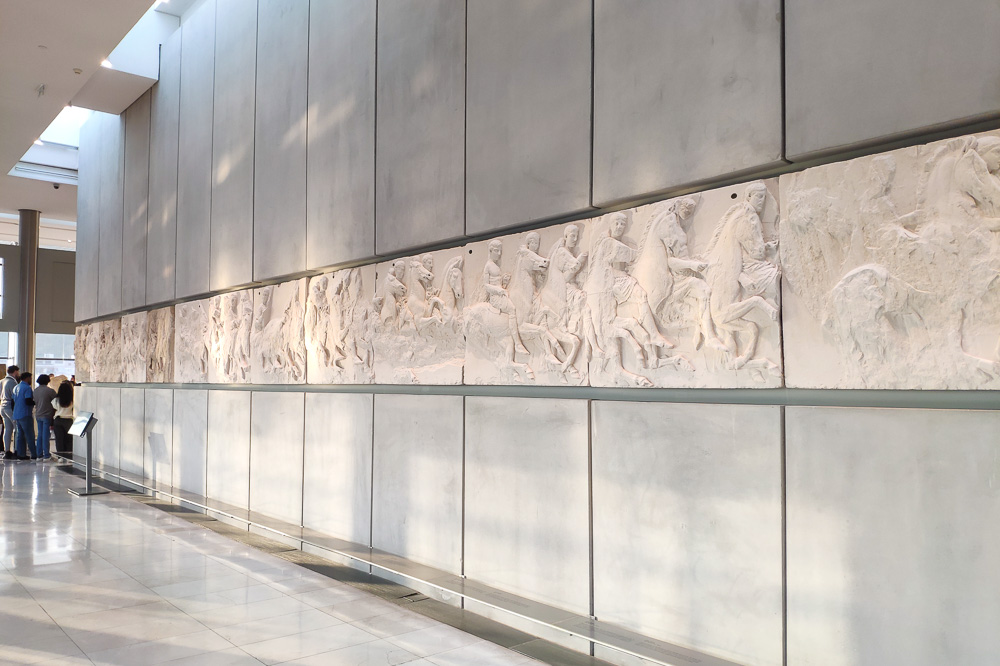
Having been to both the Acropolis Museum and the Duveen Gallery, I must say that there is a notable difference in the way the sculptures are presented in both locations. In Athens, the display of the sculptures in a bright and airy gallery with direct line of sight and proximity to the Acropolis, maintains the historical and physical context crucial to understanding the history of the Acropolis; In London, however, the sculptures are mounted and displayed in a much darker space, alongside relics from other parts of the world similarly detached from their host and brought to the imperial capital – almost as if they were the trophies of a hunt.

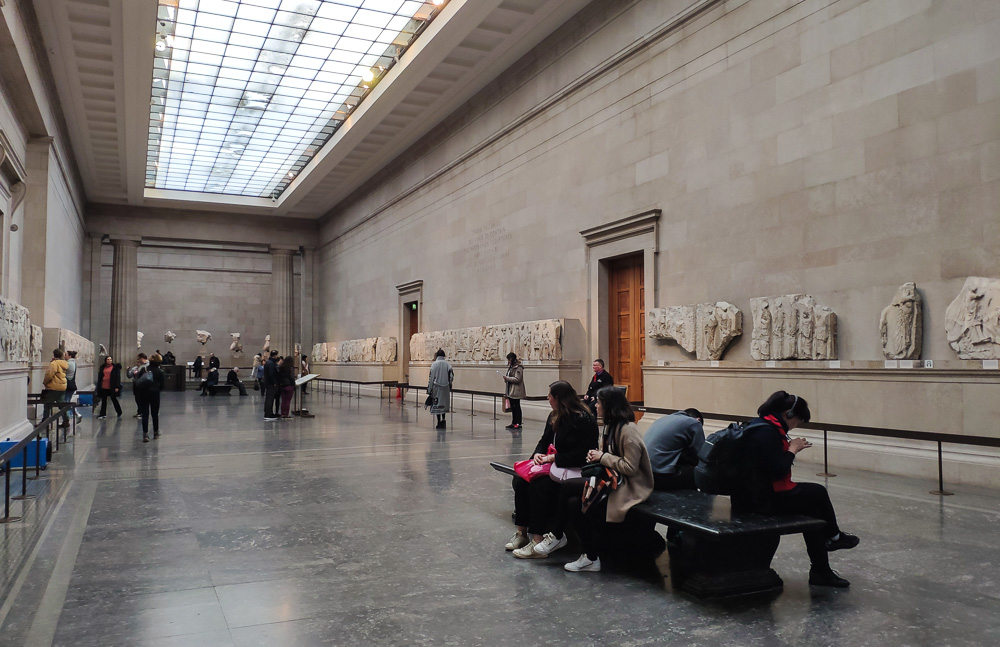
What else can you see at the Museum?
The Ground Floor
The ground floor of the Museum is where you’ll find the main entrance and the ticket desk. There is also a a statue of an owl from the 5th century BC perched just by the main entrance. Since Owls were a symbol of Athena, you can imagine it to be the goddess herself doing a stint for museum security.
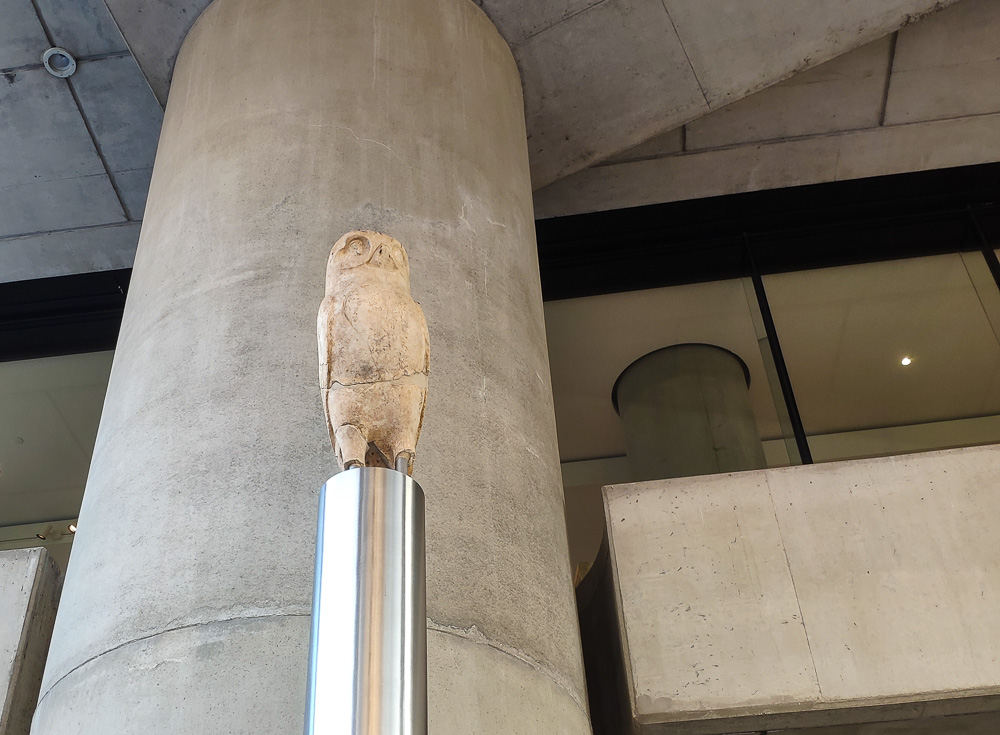
Our queue for the tickets moved fast, but you can always buy your tickets online to avoid queuing in the first place. Like a lot of other museums, visitors are then to place bags in dedicated lockers. This is obviously intended to prevent visitors from accidentally bumping over an exhibit with their bags.
There are also scale models of the Acropolis representing its various stages of development, and it helps to simplify for visitors the idea that the Acropolis was more than just the marble temples we see today.
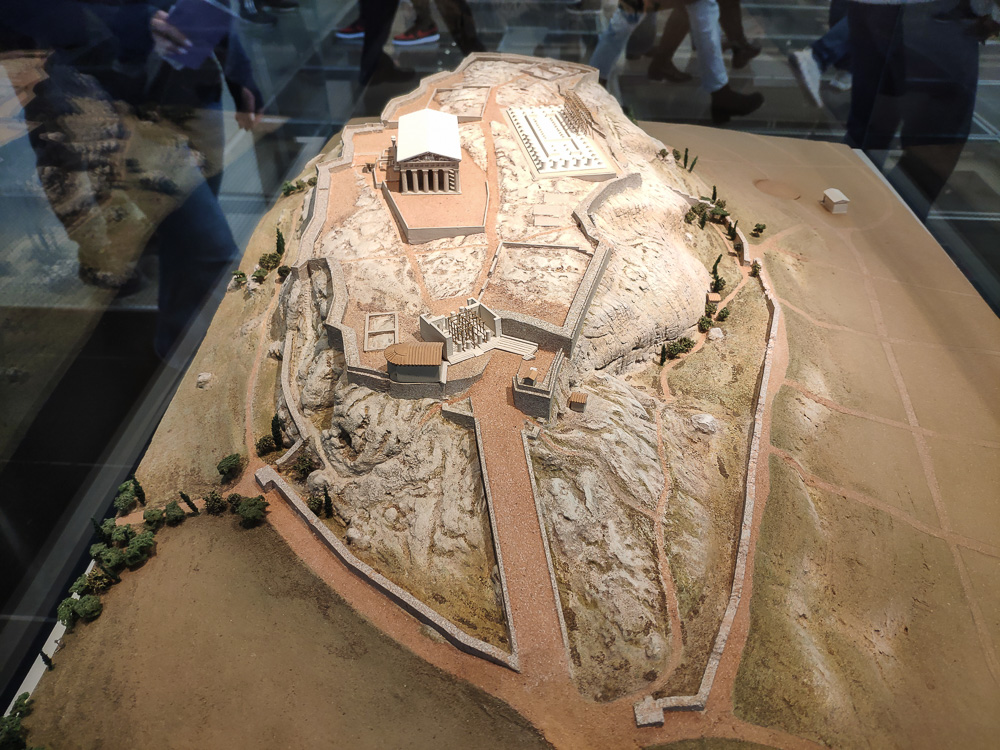
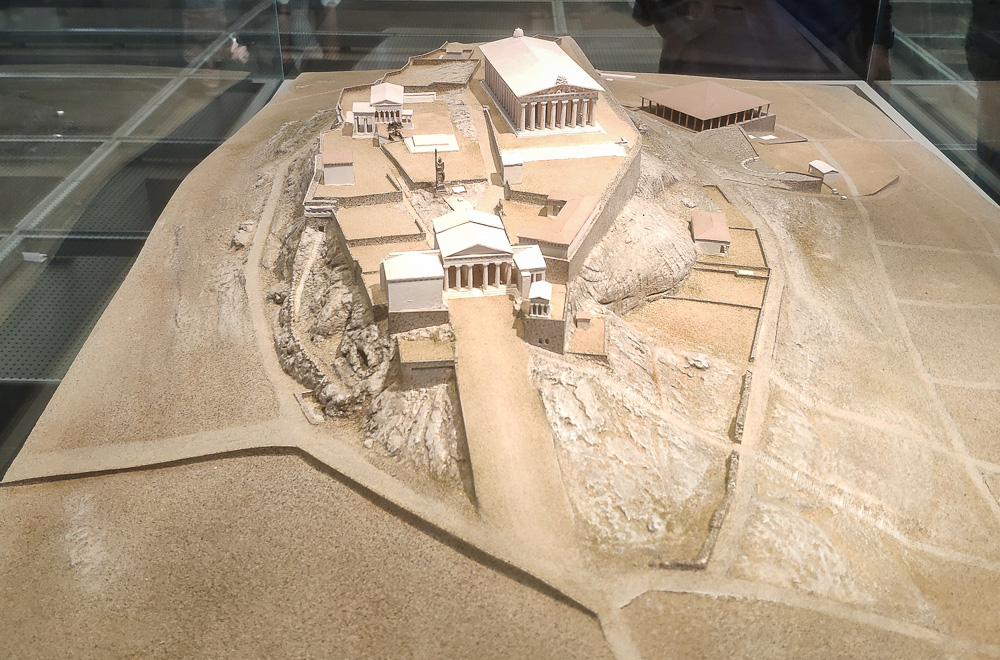
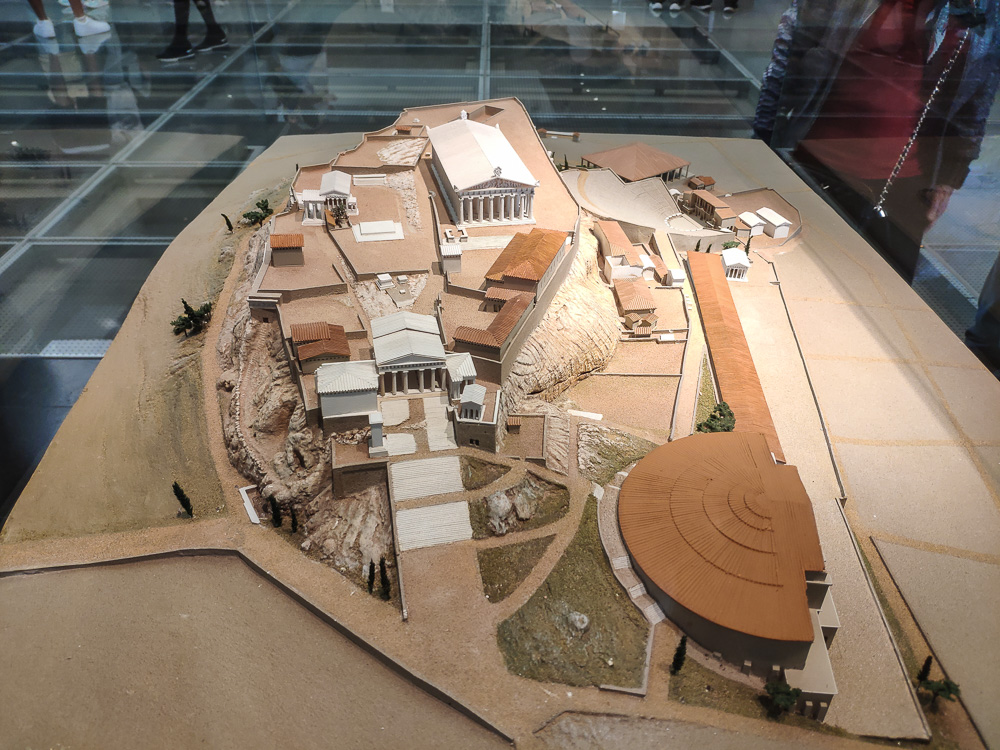
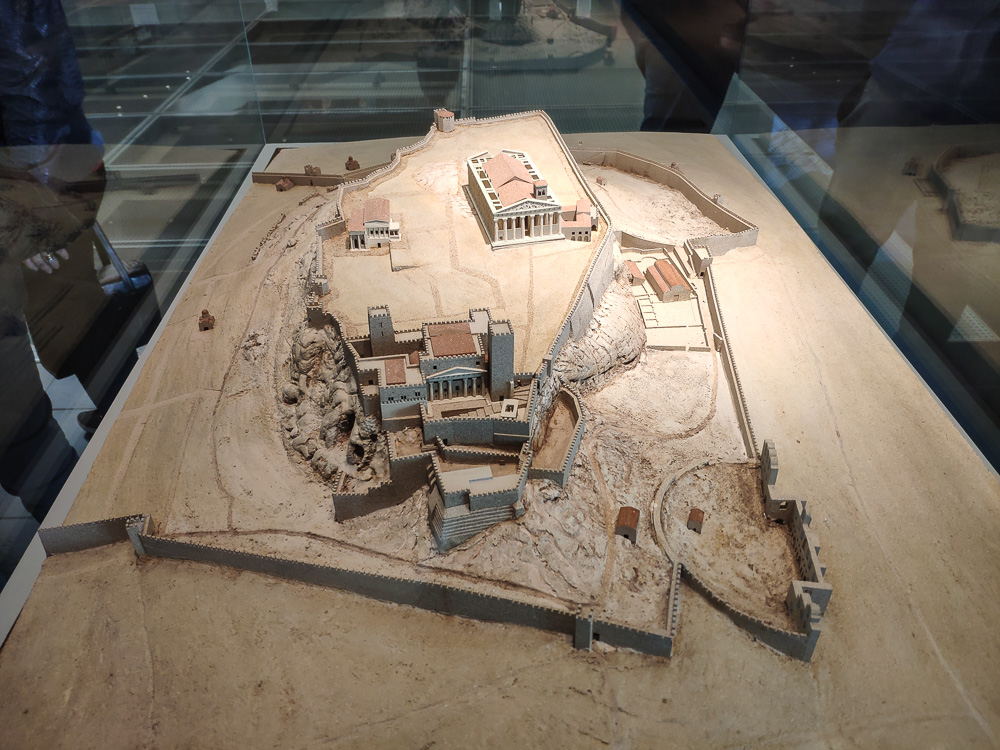
Walking through the ticket gates then brings visitors up a sloped floor, lined on both sides by smaller artefacts uncovered from the site. These date from much earlier in the Acropolis’ history than the temples we see today.
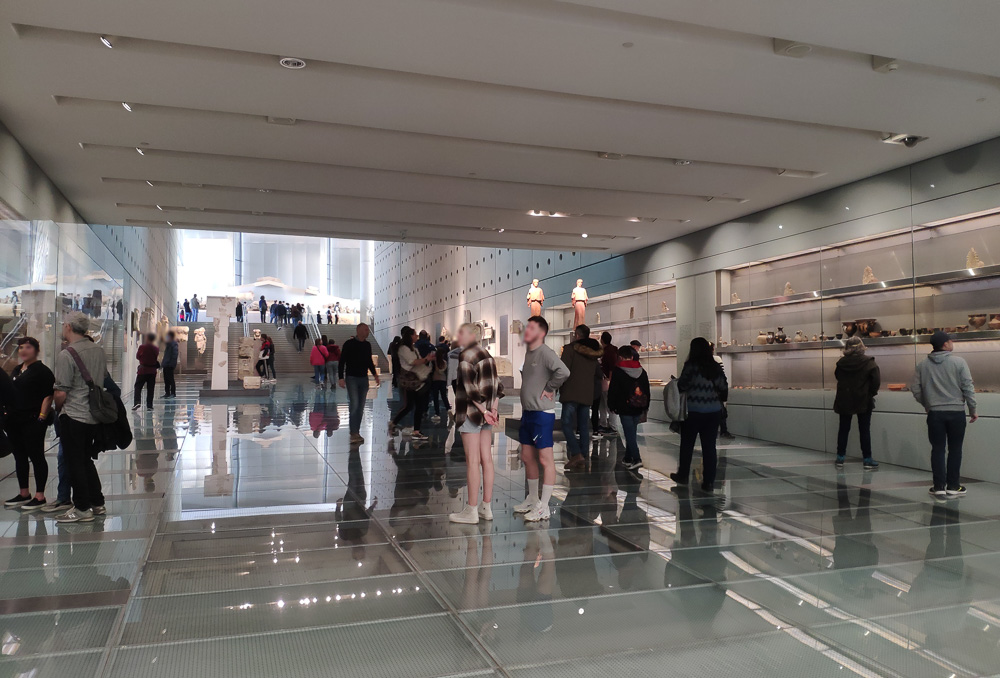
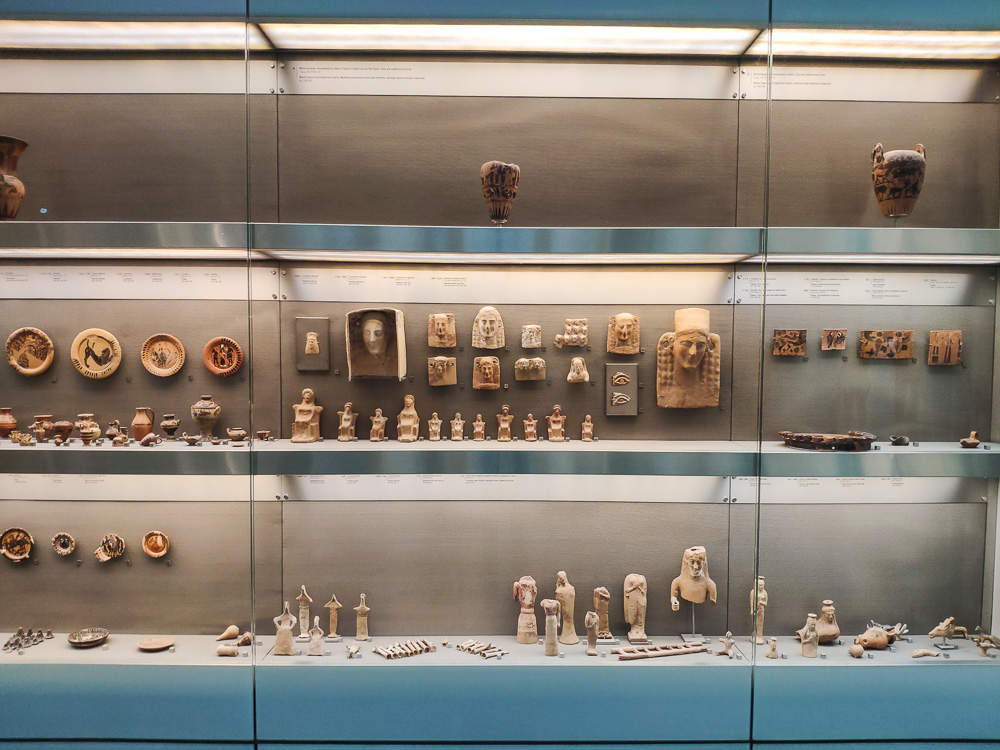
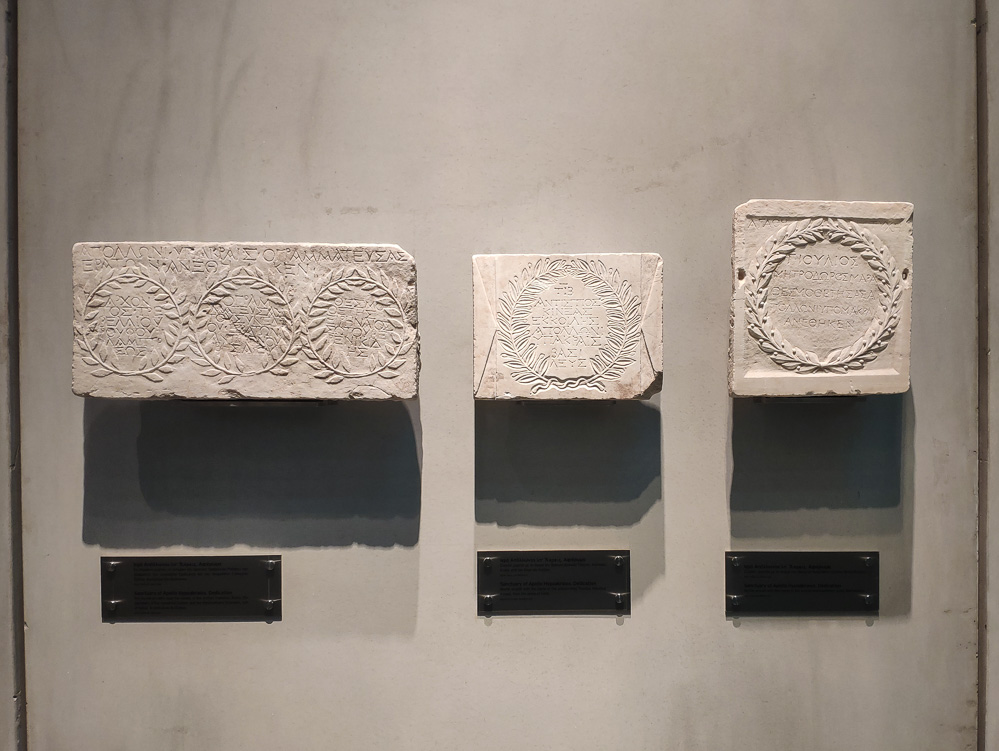
The Archaic Acropolis
The sloping walk is also meant as a reference to the actual sloping walk up to the Acropolis proper, and following the stream of visitors brings us to the gallery dedicated to the Archaic Acropolis. Here, we see pieces from the Archaic Parthenon and its fellow archaic structures. Of particular note is the Three-Bodied Daemon from the Hekatompedon, with its colour pigments still visible.
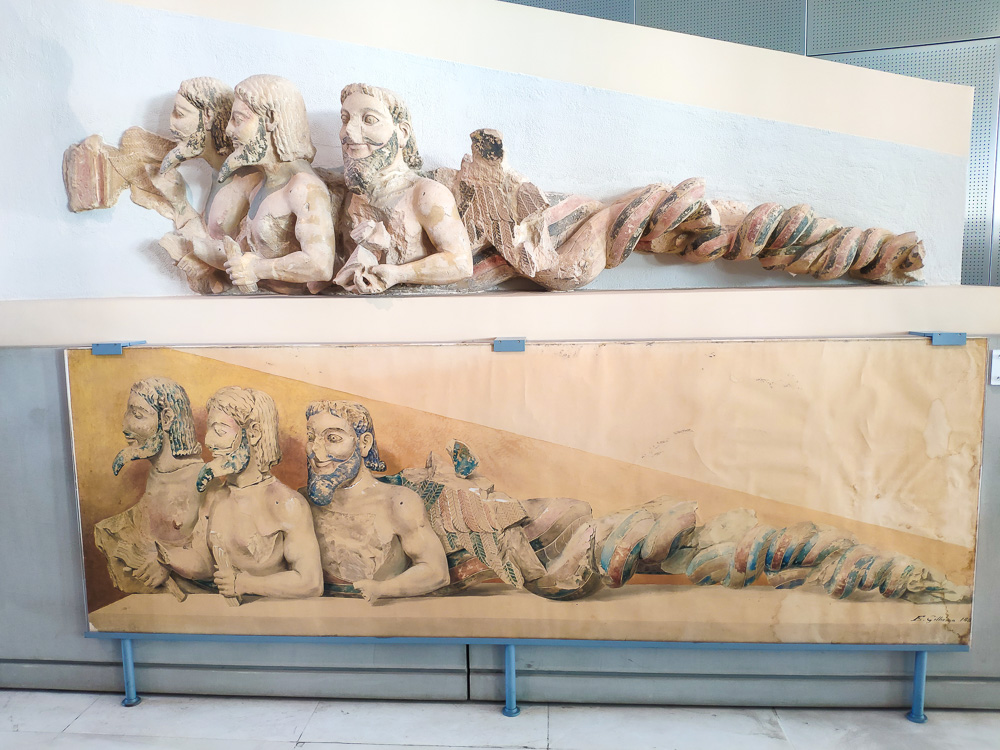
Walking the entire floor also reveals a large collection of sculptures from the same period of time. The survival of these pieces was the result of the Athenians burying a great number of sculptures in the aftermath of the Persian invasion of 480 BC, which resulted in the destruction of the Archaic Acropolis.
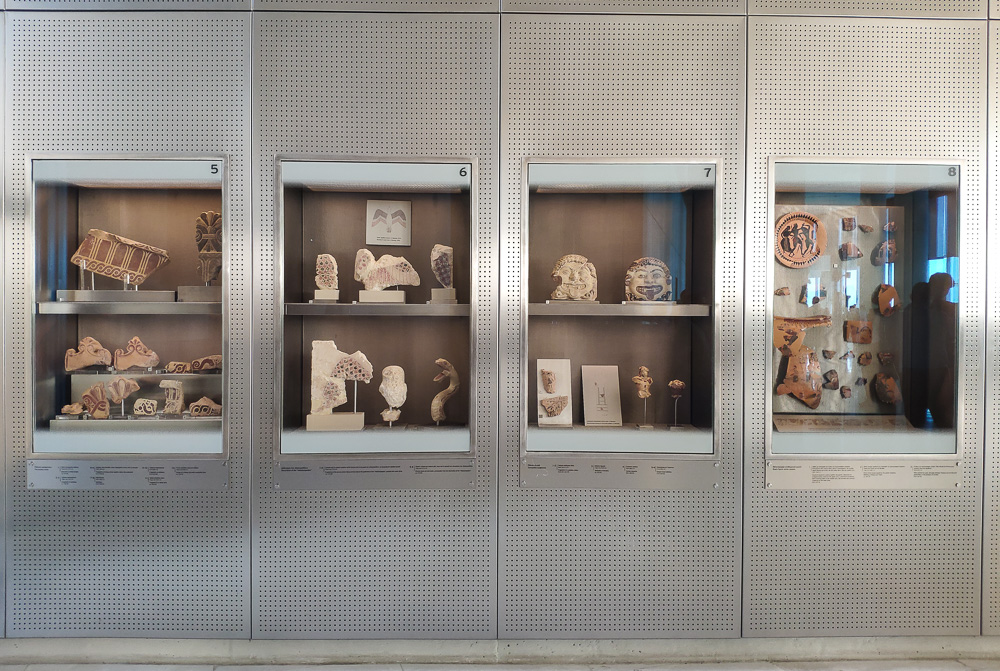
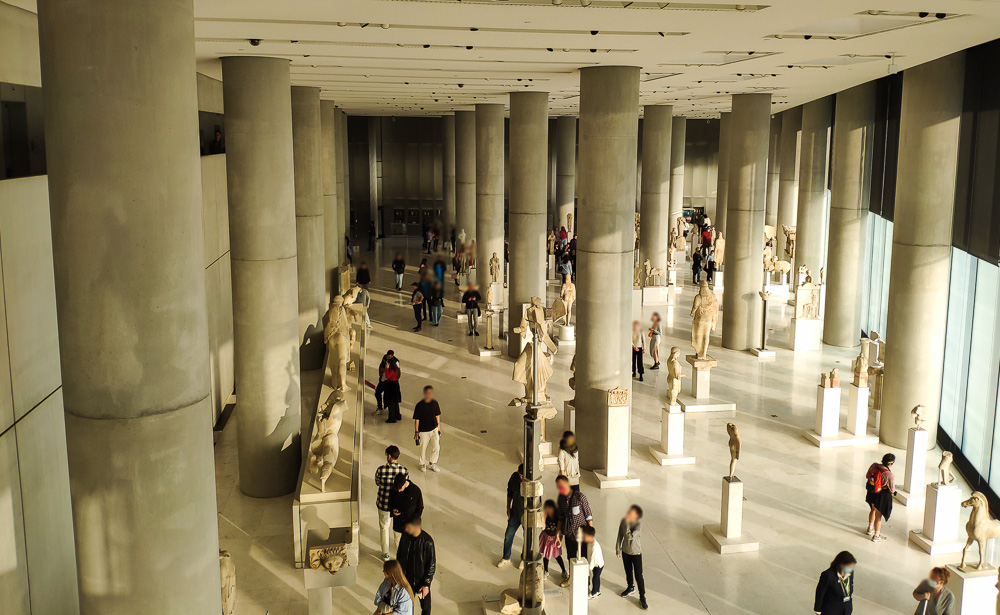
Note: Photography on this floor is strictly prohibited and Museum staff actively enforce this rule. If you want a picture of the floor, you can get one from the floor above.
The Caryatids of the Erechteion
There is one more Acropolis artefact on display at the Museum that ought to pique some interest – Located in its own corner are the five remaining Caryatids of the Erechteion. These Caryatids, essentially support pillars carved in the shape and form of female figures, once stood on the south porch of the Erechteion on the Acropolis. There used to be a total of six of them, but one of them was removed by the 7th Earl of Elgin and taken to London alongside rest of the pieces removed by him.
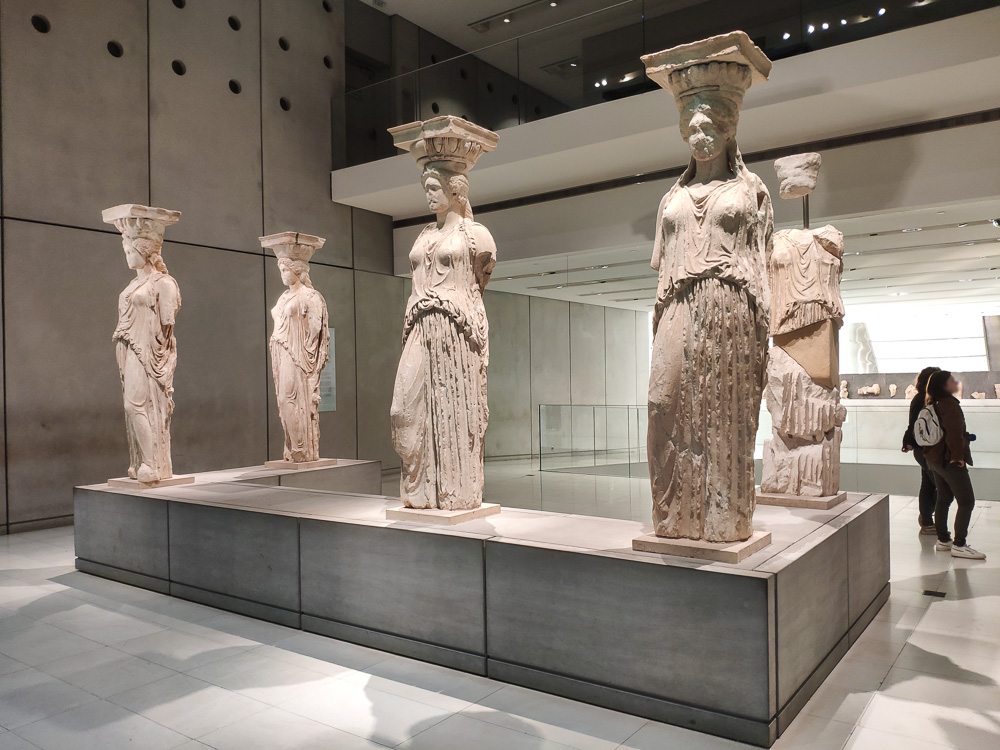
The display of the five Caryatids is setup to correspond to their actual position on the Erechteion. A gap is left to denote the absence of the sixth Caryatid, which is now on display in the British Museum. Up on the Acropolis, their positions on the Erechteion are now filled by high fidelity replicas.
The Acropolis Museum Archaeological Excavation
The Museum building is notable for being built over an archaeological site of a city district, dating over 2000 years ago from the city’s Roman and Byzantine era. Its discovery in the 1990s on the site intended for the Museum led to a new contest (the project’s fourth!) for a design that took into account the ruins. The result is a controversial design that elevated the Museum building over the entire archaeological site, which kept it accessible to visitors and researchers.
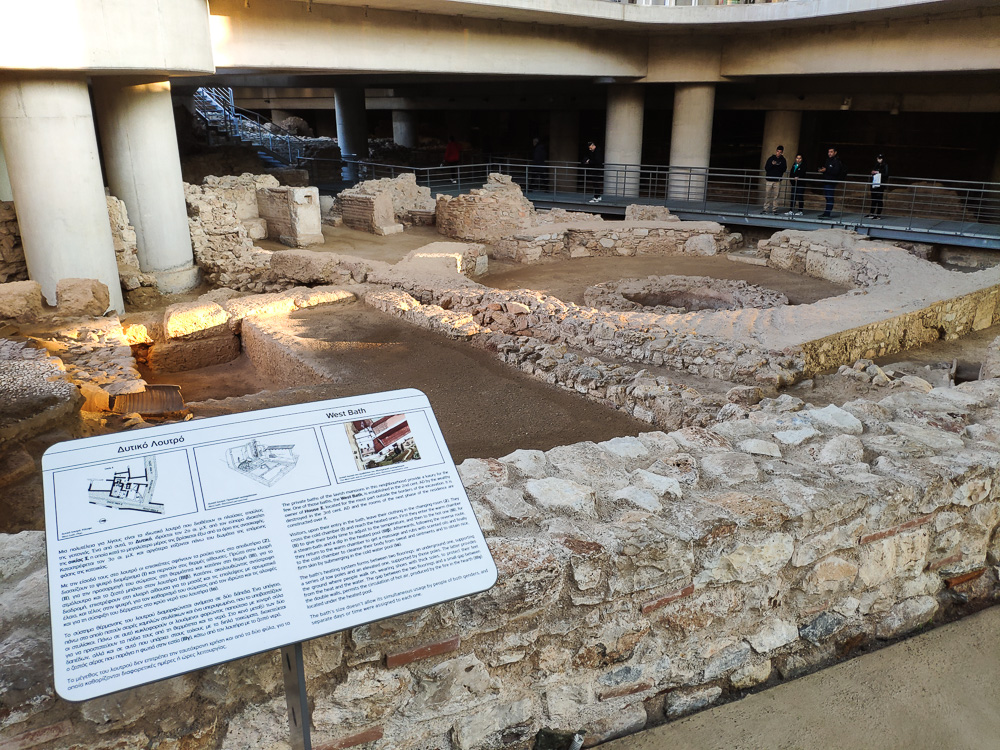
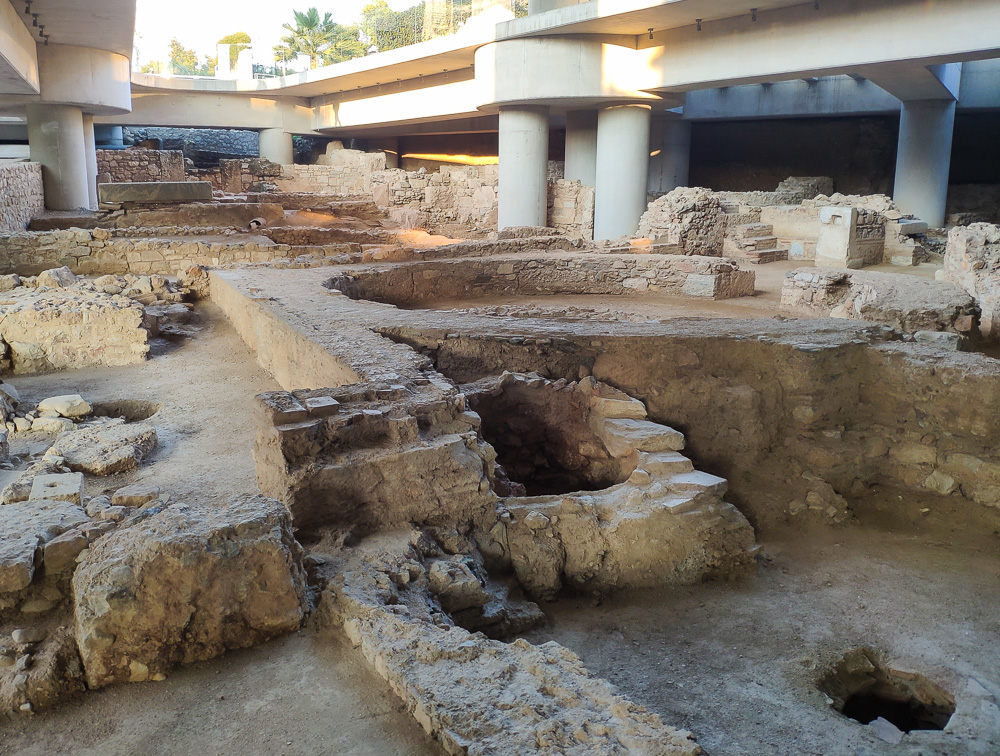
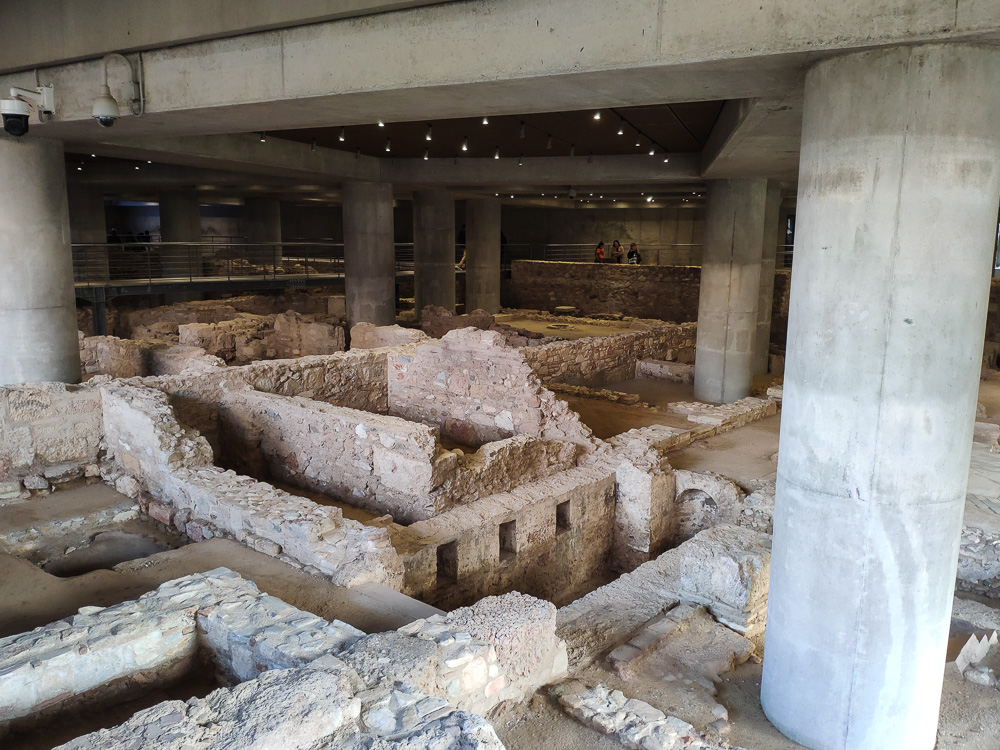
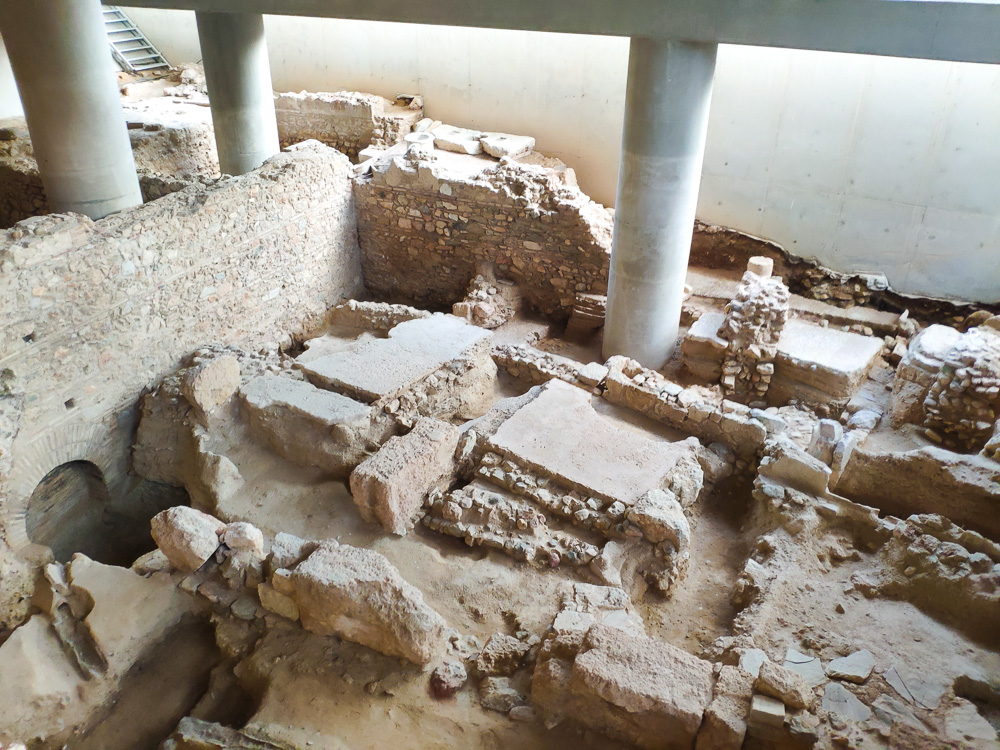
Visitor Information
Opening Hours
| Period | Opening Hours |
|---|---|
| 1 April – 31 October (Summer) | Monday 9:00 am – 5:00 pm Tuesday – Sunday 9:00 am – 8:00 pm Friday 9:00 am – 10:00 pm |
| 1 November – 31 March (Winter) | Monday – Thursday 9:00 am – 5:00 pm Friday 9:00 am – 10:00 pm Saturday & Sunday 9:00 am – 8:00 pm |
The Archaeological Excavation site is open everyday from 9:00 am, and closes at 5:00 pm daily in Winter, on Monday in the Summer and at 8:00 pm from Tuesdays to Sundays in the Summer.
Buying Tickets
Tickets for the Acropolis Museum can be pre-purchased online on the Museum’s website, or in person at the Museum itself. I recommend buying your tickets online as it will save you from having to queue.
| Ticket type | Period | Price (€) |
|---|---|---|
| Single Entry | 1 April – 31 October (Summer) | 15.00 |
| 1 November – 31 March (Winter) | 10.00 | |
| Reduced Entry Ticket | 1 April – 31 October (Summer) | 10.00 |
| 1 November – 31 March (Winter) | 5.00 |
Reduced Entry and Free Tickets are subject to a list of eligible visitors. For a full list, visit the Museum’s info page on Tickets.
Note: Your ticket includes admission to the Archaeological Excavation site.
Location
The Acropolis Museum is a 15 minute walk from Syntagma Square. It is s highly distinctive presence and cannot be missed.
To get here from Syntagma Square, walk down Vasilissis Sofias Avenue (Λεωφόρος Βασιλίσσης Σοφίας) until just after the imposing Hadrian’s Arch on your left (on the other side of the road), and turn right on Dionysiou Areopagitou Street (Οδός Διονυσίου Αρεοπαγίτου). Walk straight down Dionysiou Areopagitou and you will then reach the South Slopes of the Acropolis of Athens on your right. Turn to your left, and you’ll find the Acropolis Museum.
If you’re coming by the Athens Metro, the closest station is the eponymous Akropoli (Ακρόπολη) station on Line 2 (Red). Just look for the exit on Makrygianni Street (Oδός Μακρυγιάννη). It is the closest exit to the Museum.
Final Thoughts
The Museum gives its visitors a much needed exposure to the historical background of the Acropolis and its collection of structures. In other words, a visit to the Acropolis just isn’t complete without a visit to the Museum.
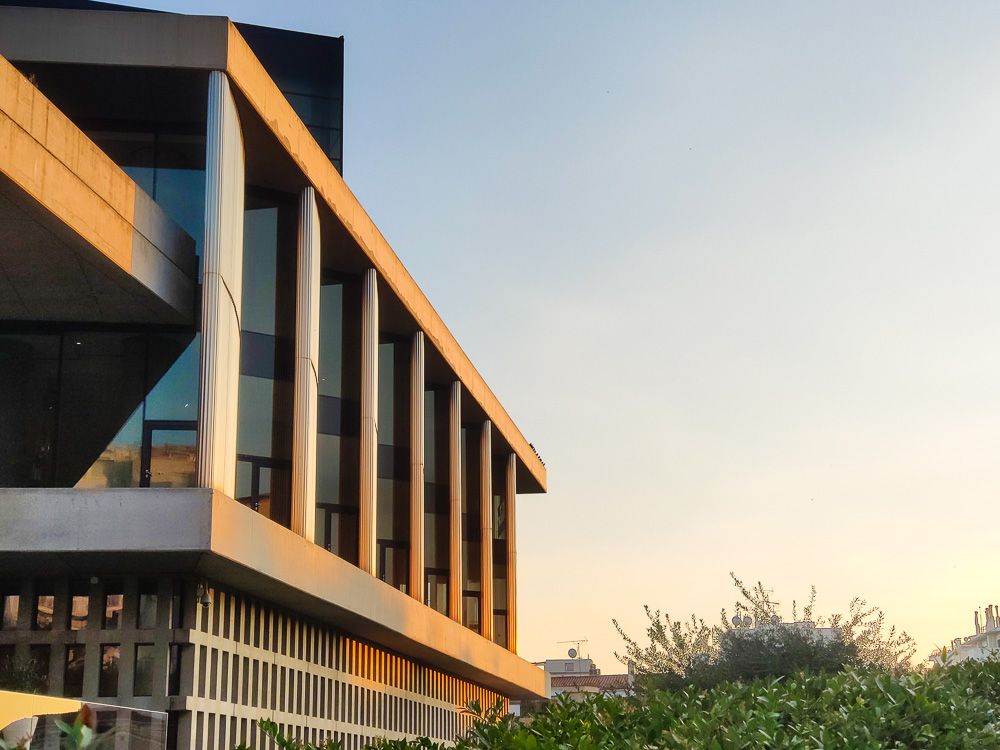
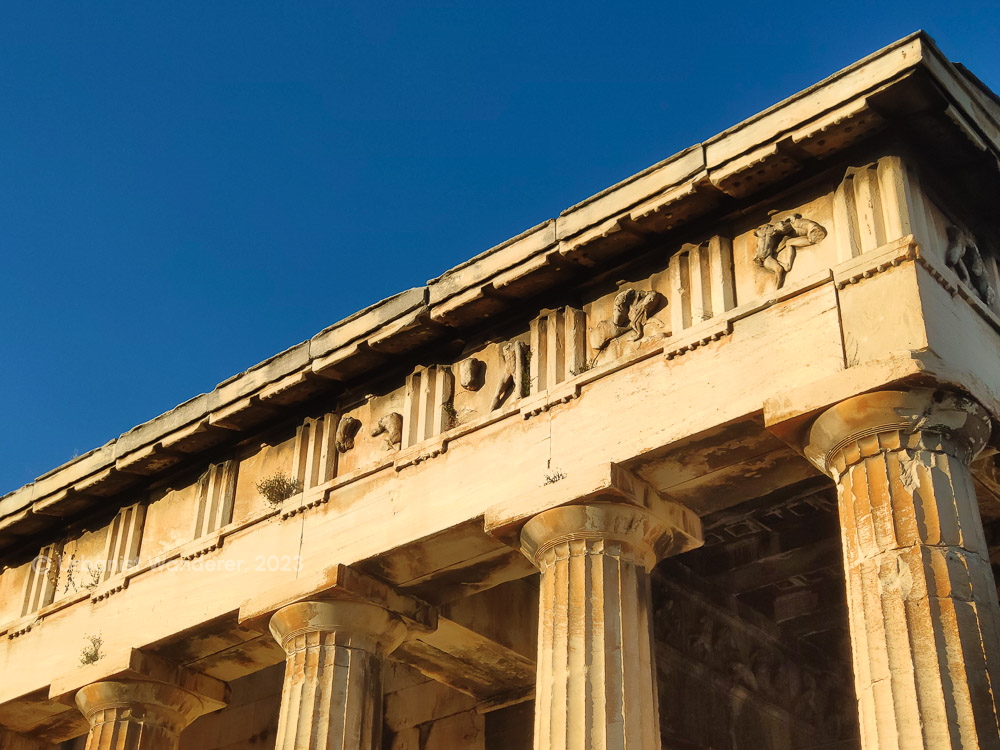

Comments
One response to “Athens in Winter | The Parthenon Gallery at the Acropolis Museum”
[…] want to get up close with its decorative feature, you’ll have to make your way to the nearby Acropolis Museum – much like its counterparts, some of the Temple’s decorative features have been […]